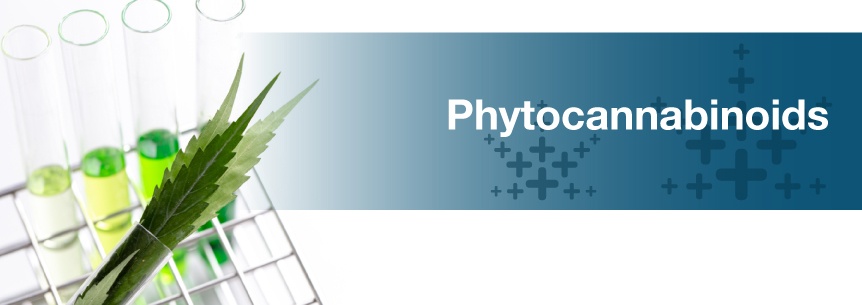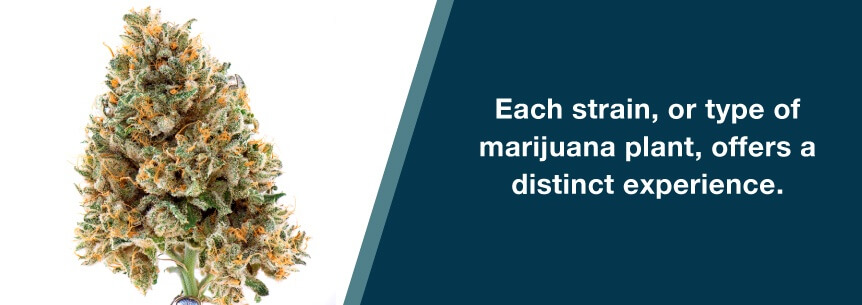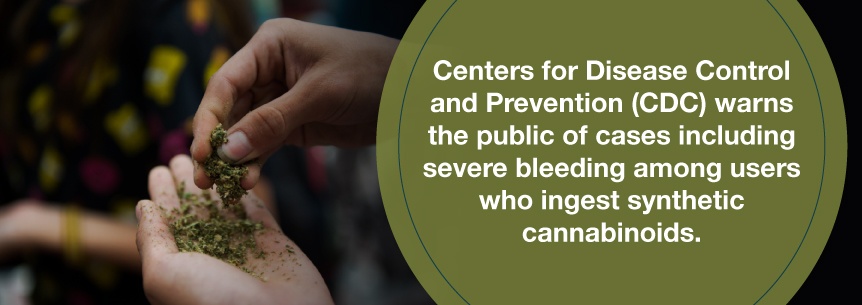
In the medical marijuana world, many different terms are thrown around, and it can become quite confusing. For example, you may have heard of the term “phytocannabinoids.” What are phytocannabinoids and why do they matter? In this post, we’ll explain the differences between marijuana terms such as phytocannabinoids, cannabinoids and endocannabinoids to clear up any confusion about marijuana chemicals. We’ll also highlight the benefits of cannabinoids and how they affect the human body.
Phytocannabinoids are the cannabinoids that naturally occur in the marijuana plant. The prefix “phyto-” means “of a plant.” You may hear the term cannabinoids used more frequently than phytocannabinoids, though they have the same meaning.
Cannabinoids are found in the sticky resin produced by small glands in the marijuana plant. Cannabinoids are mostly insoluble in water but can be dissolved in fat and alcohol. Over 480 compounds have been found in the cannabis plant, and at least 85 of them include cannabinoids. Many cannabinoids are yet to be discovered. The most widely known and studied phytocannabinoids, or naturally-occurring cannabinoids include:
There are two types of cannabinoids — psychoactive and non-psychoactive cannabinoids. Psychoactive cannabinoids, like THC, produce a “high” feeling. Non-psychoactive cannabinoids, like CBD, do not get users high. Both types of cannabinoids offer unique health benefits.
Phytocannabinoids like THC and CBD are used for a variety of reasons, from treating chronic pain to relieving anxiety and enhancing creativity. Scientists are researching ways cannabinoids may also be used to prevent certain conditions such as Alzheimer’s disease. For example, one study published in 2006, found that cannabinoid molecules may slow the progression of Alzheimer’s disease. Alzheimer’s disease is the sixth leading cause of death in the United States.

Currently, the following cannabinoids are used to treat a range of conditions such as:
Phytocannabinoids interact with cannabinoid receptors in the body to create different effects. The cannabinoid receptors are part of the endocannabinoid system (ECS) and are located mostly in the brain but also in other parts of the body like immunity cells. The ECS helps regulate certain functions in the body such as sleep, pain, memory and appetite. The ECS plays a major role in maintaining homeostasis within the body. Homeostasis keeps the body internally stable despite external changes.
When an individual ingests marijuana, the cannabinoids from the plant attach to the cannabinoid receptors in the ECS. These receptors are known as CB1 and CB2 receptors. When the cannabinoids attach to receptors, they activate the receptors and create a physiological response. For example, your brain may receive a message to relax, sleep or eat after cannabinoids interact with cannabinoid receptors in your body.
Not all phytocannabinoids attach to receptors. For example, CBD does not attach to any receptors. Instead, CBD helps prevent the breakdown of anandamide — the body’s natural cannabinoid.
Scientists are recognizing the ECS as an important target for developing medicines to treat complex disorders. With a better understanding of how the ECS works, scientists and doctors can use cannabinoids to relieve many symptoms resulting from a vast array of conditions, and might even prevent certain diseases.
The effect of the phytocannabinoids depends on several factors such as:

Many cannabinoids produce similar results such as pain relief and improved mood.
Each phytocannabinoid offers a unique benefit for the user. Cannabinoids share many similarities as well. Common cannabinoid benefits include:
As a whole, phytocannabinoids are valued for their ability to relieve pain, and they are becoming increasingly popular alternatives to opioid medications. Most types of cannabinoids also reduce inflammation.
Inflammation has different causes such as germs or injuries, and some conditions like arthritis cause inflammation. Severe inflammation can cause flu-like symptoms and blood changes. Chronic inflammation can lead to diseases such as rheumatoid arthritis, psoriasis and Crohn’s disease. With anti-inflammatory properties, phytocannabinoids might be the perfect solution to reducing chronic inflammation.
“Endo-” means “internal.” Endocannabinoids are the cannabinoids we produce in our bodies. Just like phytocannabinoids, endocannabinoids attach to cannabinoid receptors to produce different effects. They are naturally part of the human ECS. If we did not have an ECS and naturally-produced endocannabinoids, our bodies would not be able to recognize the cannabinoids from the marijuana plant.
The ECS is made up of three main components. Those are:
The body produces two main endocannabinoids which are similar to THC to bind to and activate cannabinoid receptors. The most studied endocannabinoids include:

Anandamide is often referred to as the bliss molecule. You might experience a release of anandamide after satisfying a chocolate craving. Anandamide plays an important part in relieving pain by binding with CB1 receptors.
2-AG has a chemical structure similar to anandamide. The 2-AG endocannabinoid plays a major role in reducing inflammation through immune suppression. It also functions as a psychoactive chemical when it binds to CB1 receptors in the brain.
Your body produces endocannabinoids as needed. They are synthesized from omega-6 fatty acids. Metabolic enzymes such as monoacylglycerol lipase (MAGL) and fatty acid amide hydrolase (FAAH) make sure the body does not use more of these chemicals longer than needed and quickly destroy them once they are used. These naturally-produced cannabinoids are involved in a variety of biological processes.
The endocannabinoid system is a relatively new discovery. It wasn’t until 1992 that scientists discovered anandamide and concluded that they were the CB1 receptor’s endogenous ligand or specialized protein that attaches to a receptor. In 1995, researchers discovered 2-AG which activates both CB1 and CB2 receptors, unlike anandamide. Anandamide plays an important role in regulating:
Cannabinoid receptors can override cells, unlike other cells. For example, a fractured bone results in cell death. The body’s lymphatic system would respond to this by increasing blood flow and white blood cells to the fractured area. The ECS would recognize the excessive amount of lymphatic signals and when there is no longer a need for inflammation. At that time, the immune cells and tissues containing cannabinoid receptors would bind with cannabinoids to reduce inflammation.
Our body naturally produces endocannabinoids only as needed. However, when we ingest phytocannabinoids, we flood the body with cannabinoids and “over-activate” the ECS. The THC in the plant activates receptors all over the body, creating different effects such as reducing inflammation or stimulating hunger.
Simply said, phytocannabinoids mimic endocannabinoids in the body. The body recognizes phytocannabinoids as endocannabinoids allowing the user to experience the effects of marijuana.
However, sometimes our natural endocannabinoids create a “high” sensation without the need to consume phytocannabinoids. An example of this would be what’s known as a runner’s high. A runner’s high is described as feelings of happiness, peace and pain reduction. For a long time, scientists credited the release of endorphins with producing a runner’s high, but recent research discovered that anandamide might be partially responsible.
In a 2015 study, mice proved that running on a wheel increases endocannabinoids and reduces both anxiety and pain. Running boosts endorphins and anandamide levels in the blood. However, endorphins cannot cross the blood-brain barrier, but anandamide can. This means that it is unlikely endorphins are responsible for causing relaxation and pain relief in limbs and other parts of the body.
You may have heard of or tried synthetic cannabinoids. Synthetic cannabinoids are human-made chemicals that are not found in the marijuana plant. Instead, synthetic cannabinoids are produced in a lab. Synthetic cannabinoids are often referred to as K2, spice or fake weed.
Like THC, synthetic cannabinoids are designed to interact with cannabinoid receptors in the brain. They were created by scientists to gain a better understanding of the endocannabinoid system. Unlike THC, many synthetic cannabinoid chemicals have different chemical structures and create a full response from a cannabinoid receptor. Individuals may choose synthetic cannabinoids as a more affordable option or to pass a drug test — not because they prefer synthetic cannabinoids.
Although synthetic weed looks like marijuana, it is not the same thing. Synthetic weed is made of chopped plant material and sprayed with synthetic cannabinoids. The chemicals belong to a family of over 700 chemicals used in research. Spice may contain one of the following synthetic cannabinoids:
Synthetic cannabinoids fit the same receptors as THC, so they produce similar effects. However, synthetic cannabinoids are two to 100 times more potent than plant-derived THC and often causes harmful side effects such as:

Centers for Disease Control and Prevention (CDC) warns the public of cases including severe bleeding among users who ingest synthetic cannabinoids. Deaths and adverse side effects such as psychosis have been reported. In April 2018 alone, three people died and 100 were sickened after taking synthetic cannabinoids. From 2010 to 2015, three deaths occurred and over 40,000 cases of toxic exposure were reported at participating hospitals and clinics.
Unlike phytocannabinoids, synthetic cannabinoids are addictive. Users who try to quit might experience withdrawal symptoms such as:
The federal government has banned many types of synthetic cannabinoids, and states have passed laws regarding the drug. As you can see, synthetic cannabinoids are not a safe alternative to phytocannabinoids.
Both phytocannabinoids and endocannabinoids help us function every day, heal from injuries, relax and cope with both physical and mental illnesses. Imagine what it would feel like without our ECS and the ability to regulate pain or hunger. As scientists continue to learn more about this important and complex system in our bodies, they will also discover ways to manipulate cannabinoid receptors with phytocannabinoids and produce health benefits. The future holds exciting possibilities for the use of medical marijuana.
If you are seeking a certified physician and cannabinoid treatment, we are here to help. Use MarijuanaDoctors.com to locate a qualified doctor or dispensary near you, or learn how to obtain a medical marijuana card in your state. Register for our free monthly newsletter and keep learning about marijuana and how it might be the perfect treatment for you or a loved one.